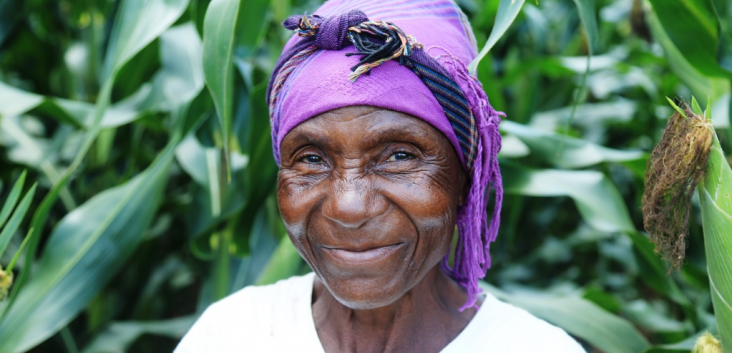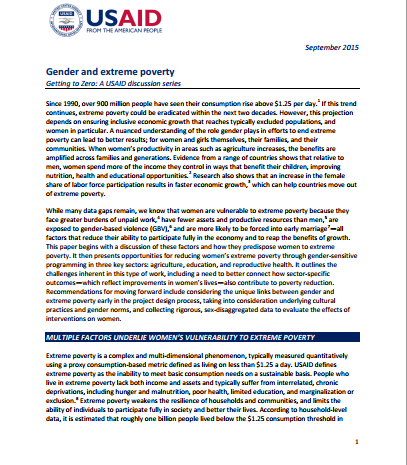- What We Do
- Agriculture and Food Security
- Democracy, Human Rights and Governance
- Economic Growth and Trade
- Education
- Ending Extreme Poverty
- Environment and Global Climate Change
- Gender Equality and Women's Empowerment
- Global Health
- Water and Sanitation
- Working in Crises and Conflict
- U.S. Global Development Lab

A discussion paper on the role of gender in ending extreme poverty
Gender and Extreme Poverty Discussion Paper ![]() (pdf - 418k)
(pdf - 418k)
USAID’s commitment to ending extreme poverty is at the heart of the Agency's mission statement. To translate this mission into action, USAID’s Vision for Ending Extreme Poverty puts forward the Agency’s multi-dimensional definition of this concept, articulates a theory of change for how it can be eradicated, and draws linkages between USAID’s current and future efforts and this global challenge. The Vision recognizes that greater gender equality means better outcomes for everyone and that the goal of ending extreme poverty will only be achieved if women and girls are at the center of our efforts. Women and girls continue to face profound inequalities across all countries, and are often particularly vulnerable to extreme poverty.
A nuanced understanding of the role gender plays in efforts to end extreme poverty can lead to better results; for women and girls themselves, their families, and their communities. When women’s productivity in areas such as agriculture increases, the benefits are amplified across families and generations. Evidence from a range of countries shows that relative to men, women spend more of the income they control in ways that benefit their children, improving nutrition, health and educational opportunities. Research also shows that an increase in the female share of labor force participation results in faster economic growth, which can help countries move out of extreme poverty.
While many data gaps remain, we know that women are vulnerable to extreme poverty because they face greater burdens of unpaid work, have fewer assets and productive resources than men, are exposed to gender‐based violence, and are more likely to be forced into early marriage —all factors that reduce their ability to participate fully in the economy and to reap the benefits of growth. This paper begins with a discussion of these factors and how they predispose women to extreme poverty. It then presents opportunities for reducing women’s extreme poverty through gender‐sensitive programming in three key sectors: agriculture, education, and reproductive health. It outlines the challenges inherent in this type of work, including a need to better connect how sector‐specific outcomes—which reflect improvements in women’s lives—also contribute to poverty reduction. Recommendations for moving forward include considering the unique links between gender and extreme poverty early in the project design process, taking into consideration underlying cultural practices and gender norms, and collecting rigorous, sex‐disaggregated data to evaluate the effects of interventions on women.








Comment
Make a general inquiry or suggest an improvement.